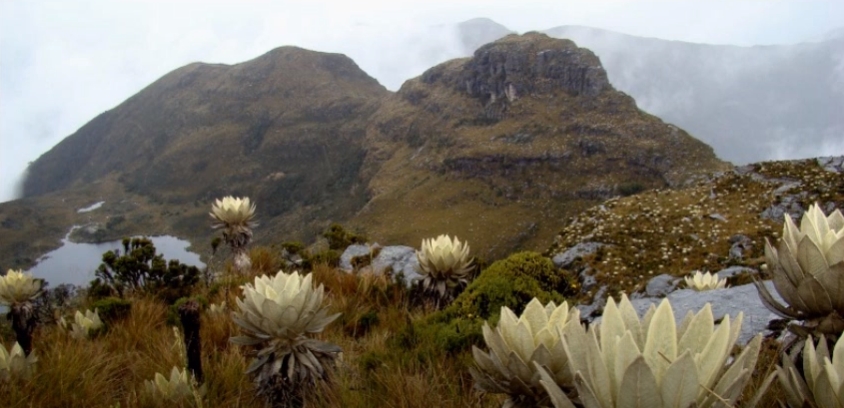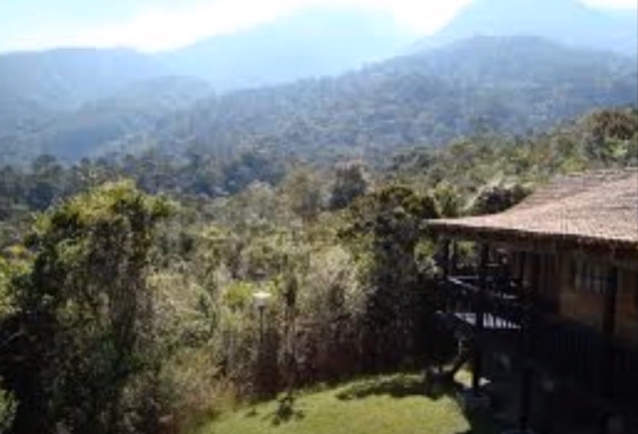Ecotourism: The Iguaque Flora and Fauna Sanctuary is a favored place for ecotourism thanks to the lush landscapes of Páramo that surround the lagoon that according to the Muiscas was
«The Cradle of Humanity».
The most representative are the sector of San Pedro de Iguaque, that of Mamá Ramos, which consists of the ruins of an old house.

And the archaeological zone, where you can see some cave paintings.
The Iguaque lagoon also stands out, which according to Muisca legend, is the cradle of humanity, since Bachué, the mother of men, emerged from there.
- Pilgrimage to this sacred lagoon is said to cleanse the soul and purify the spirit.
Likewise, the Oak sector is very attractive for its oak forests.

Trails: Due to the characteristics of the landscape
one of the most advisable activities is to take walks, for which there is initially a self-guided trail with an initial section of 700 meters, marked with eleven boards alluding to existing natural resources.
The same path continues to the Iguaque Lagoon.
The main ecotourism activity of the sanctuary is the walk to the Iugaque lagoon.
GENERAL CHARACTERISTICS:
Iguaque is a small area of paramo and Andean forest inserted in the development in one of the most intervened areas of the eastern mountain range.
It covers a stretch of 8 km and covers the municipalities of Tunja, Villa de Leyva and Arcabuco in the department of Boyacá.
The water that supplies a large part of these municipalities is born in its forests.
In the Sanctuary is the sacred lagoon of Iguaque, which, according to Muisca legend, is the cradle of humanity. From there emerged Bachúa, the mother of the Muisca men.
Pilgrimage to this sacred lagoon cleanses the soul and purifies the spirit.

EXTENSION
The Sanctuary has an extension of 6,750 hectares and includes elevations ranging from 2,400 meters to 3,800 meters above sea level.
Its wealth is represented in the flora and the abundant water currents that supply the aqueducts of neighboring towns such as Sáchica.
San Pedro de Iguaque, Santa Sofía, Gachantivá and Arcabuco.
The highest branch is the Morro Negro that can be seen from Villa de Leyva and it passes 3,400 meters; the westernmost is the Esterillal hill, which exceeds 3,000 meters.
Variety of flora, fauna and abundant water currents that are born in the mountainous part of the Sanctuary. Paramo with eight lagoons.

Due to its climatic variety, it has soils and vegetation of diverse conformation.
- Its fauna is very varied, it includes species such as: faras, fruit bats, squirrels, soche deer, white, kingdom and paramo.
Tour package
Iguaque Flora and Fauna Sanctuary Tour
To get to the Iguaque Lagoon, you have to walk more than three hours on natural trails where crystalline water sources emerge from the mountains and, along the road.
You walk in the company of a large number of plant species that are intact within your tone.
that everything should be reached in a cabin where the personnel in charge of the nature reserve are located, there a talk is received about the site.
And recommendations are given to continue the walk through the Sanctuary.
About 20 minutes walk through a stone path are some beautiful cabins, which can be rented by tourists.
It is a walk that requires good physical condition, since it is quite demanding, but every effort is worth it to get to this magical place.
The cold becomes more intense as it rises, the mist becomes more visible, and the humidity is enough to soak our clothes, but as previously stated, it’s worth it!
It is recommended to wear rubber boots, a good coat (jacket, hat gloves), raincoats, and some food (usually fruits) to obtain energy during the tour.
When it is not long before you arrive, you can see the frailejones, representative species of the paramo forest.
And finally, imposing there, we find the Iguaque Lagoon, a mirror of water that reflects the sky of Boyacá.
Its totally crystalline water reveals its bed of green algae. Nothing more enjoyable than taking a sip of this pure, natural, herb-flavored water after the hard walk.
The landscape is simply beautiful, to appreciate it we must be warm enough to withstand the intense cold of the place.
Tourists are advised not to litter on the spot, not to damage or spoil plant species and to walk on the established trails, all with the aim of conserving the ecosystem.
